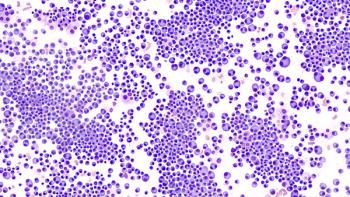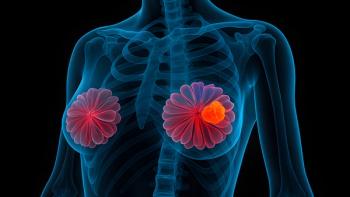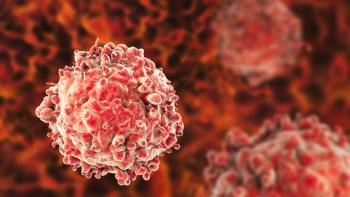
Oncology Nurses Aid BC Survivorship and Lymphedema Prevention
Because oncology nurses are at the forefront of patient care, they are uniquely positioned to facilitate cancer survivorship and lymphedema prevention.
Novel therapies enable patients to live longer lives, and, when paired with holistic survivorship care, those longer lives can be healthier ones. Survivorship is a critical yet often overlooked aspect of cancer care. In its ideal form, it is holistic, person-centered, and continuous. Survivorship care has the potential to decrease the burden of long-term effects of cancer treatment and address patients’ practical concerns.1
Oncology nurses, who play an increasingly pivotal role in guiding patients through their cancer journeys, have many opportunities to support optimal cancer survivorship. Those who have dedicated their careers to advancing cancer care and advocating for oncology nurses have witnessed firsthand how the profession has adapted to meet the needs of cancer survivors.
Survivorship Program Standards and Guidelines
One of the most significant challenges in survivorship occurs during the transition from active treatment, particularly when patients move from oncology settings to primary care. Survivorship care plans have emerged as crucial tools for managing these transitions, but with nurses and nurse practitioners often playing key roles in these interventions, the care plans rely on nurses’ expertise.2
These plans must serve as dynamic roadmaps rather than static documents. Through careful development and coordination, nurses ensure that survivorship plans effectively communicate treatment history and potential long-term effects to all care providers. The plans must outline specific screening and monitoring requirements, considering the unique aspects of each patient’s treatment journey.
Comprehensive plans should address both physical and emotional aspects of recovery, providing actionable guidelines for both patients and future care providers.1 This becomes especially critical when managing long-term effects of treatments such as radiation and surgical interventions for breast cancer, which may require ongoing monitoring for complications like
Both the National Comprehensive Cancer Network (NCCN) guidelines and the National Accreditation Program for Breast Centers (NAPBC) standards contain recommendations for comprehensive breast cancer survivorship care.3,4 These guidelines highlight the importance of creating individualized survivorship care plans, interprofessional collaboration, regular monitoring for treatment-related effects like lymphedema, psychosocial support, and lifestyle recommendations to improve overall health outcomes for breast cancer survivors.
The Financial and Personal Impact of Lymphedema
Lymphedema extends far beyond simple swelling. When normal lymphatic drainage is disrupted, it leads to stagnant lymphatic flow and an impaired immune response, potentially resulting in serious complications like cellulitis, a dangerous bacterial skin infection. Beyond the substantial financial burden—which can range from $14,877 to $23,167 over just 2 years5—lymphedema can profoundly diminish quality of life, often causing physical limitations and psychological distress. These combined physical, emotional, and economic challenges highlight the urgent need for proactive breast cancer care. Early detection and intervention can substantially reduce these burdens, making consistent monitoring an essential part of comprehensive
Implementing Effective Surveillance and Support
The success of lymphedema surveillance depends on strong nursing leadership and engagement. Drawing from implementation science and evidence-based practice, effective programs establish clear baseline measurements before treatment starts and integrate monitoring seamlessly into existing workflows.6 Follow-up schedules align with other appointments to ensure compliance, while patient education empowers individuals to participate actively in their care.
Bioimpedance spectroscopy (BIS) has gained formal recognition as an important objective measurement tool in this process, with both NCCN guidelines and NAPBC standards endorsing it as an evidence-based method for lymphedema early detection.3,4 This noninvasive approach can detect subclinical fluid buildup before visible symptoms appear, enabling earlier intervention compared to traditional volume measurements.
Through education about lymphedema risk factors, early detection methods, and risk reduction strategies, oncology nurses empower patients to take an active role in their care journey. This support extends to caregivers as well, recognizing their role in monitoring for early signs of lymphedema. By connecting survivors with appropriate resources - including lymphedema specialists, compression garment services, and support groups - nurses help create a sustainable support network.
The Evolving Role of Oncology Nurses in Survivorship Care
Today’s oncology nurses are no longer confined to acute treatment settings. Instead, they serve as essential bridges across the entire cancer care continuum, from diagnosis through long-term survivorship. They coordinate comprehensive care across interprofessional teams, implement evidence-based guidelines for follow-up care, apply their expertise in symptom management, and ensure seamless transitions between care settings, serving as the consistent thread throughout a patient’s journey.
The nurse’s expanded role in coordinating comprehensive survivorship care includes proactive lymphedema surveillance by integrating multiple assessment approaches into holistic patient care. This evolution requires new skills, knowledge of technologies like BIS, and implementation of evidence-based prevention protocols. Through continued education and innovative surveillance technologies, oncology nurses are positioned to significantly improve quality of life and reduce the physical, emotional, and financial burden of cancer survivorship.
Reference
- Dietrich L, Smith AL, Watral A, Borgert AJ, Al-Hamadani M, Van Oosbree M, Meyer CM. Effectiveness of a survivorship program: an assessment of patients with breast cancer in a community setting. J Oncol Pract. 2016;12(6):e688-e696. doi:10.1200/JOP.2015.010413
- Mayer, D.K., Birken, S.A., Check, D.K. and Chen, R.C. (2015), Summing it up: An integrative review of studies of cancer survivorship care plans (2006-2013). Cancer, 121: 978-996. doi:10.1002/cncr.28884
- NCCN Guidelines Version 2.2025: Survivorship. National Comprehensive Cancer Network (NCCN). Updated May 23, 2025. Accessed June 17, 2025. https://www.nccn.org/professionals/physician_gls/pdf/survivorship.pdf
- Optimal Resources for Breast Care. National Accreditation Program for Breast Centers (NAPBC). January 1, 2024. Updated January 2025. Accessed June 17, 2025. https://accreditation.facs.org/accreditationdocuments/NAPBC/Standards/Optimal_Resources_for_Breast_Care_2024.pdf
- Bian J, Shen A, Yang W, Zhang L, Quian W. Financial toxicity experienced by patients with breast cancer-related lymphedema: a systematic review. Support Care Cancer. 31, 354 (2023). https://doi.org/10.1007/s00520-023-07800-9
- Jeffers, E.J., Wagner, J.L., Korentager, S.S. et al. ASO Visual Abstract: Breast Cancer-Related Lymphedema (BCRL) and Bioimpedance Spectroscopy: Long-Term Follow-Up, Surveillance Recommendations, and Multidisciplinary Risk Factors. Ann Surg Oncol 30, 8479 (2023). https://doi.org/10.1245/s10434-023-14170-3
Newsletter
Knowledge is power. Don’t miss the most recent breakthroughs in cancer care.















































































